When’s the last time Hollywood delivered a sequel to a film made 37 years prior?
From Screen Daily‘s “Cannes 2024: What’s in the running?” (3.21.24), co-written by Mona Tabbara, Jeremy Kay, Elisebet Cabeza, Emilio Mayorga and Rebecca Leffler:

The filming of Megalopolis began in November 2022 and concluded in March 2023.
I want an unequivocal, unmitigated apology from everyone (and especially from HE commenter Dean Treadway) who argued with me about the spelling of Road House. Everywhere in the country it’s spelled “roadhouse” and the movie title is just wrong…a weird fabrication. And guess what? Road House itself agrees.
Jake Gyllenhaal: Can I ask a question?
Jessica Williams: Sure.
Gyllenhaal: Why is it called the Road House?
Williams: Whadaya mean?
Gyllenhaal: Isn’t roadhouse one word?
Williams: Yeah. That’s the joke. It’s a roadhouse, but it’s called the Road…House. Get it?
Gyllenhaal: Still unresolved.
Williams: Well, I don’t know. My uncle had a unique sense of humor.
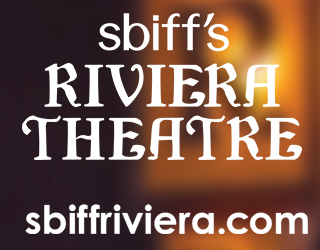
“Everything I’ve worked for [is gone]…over a fucking bouncer!”
I liked Doug Liman’s half-dopey, self-satirizing Road House much, much more than Rowdy Harrington’s 1989 version.
I don’t remember Harrington’s film being even randomly amusing, but Liman’s is occasionally hilarious, especially during the last half-hour, a CG extravaganza that plays like a kind of aquatic Road Warrior.
Jake Gyllenhaal‘s Elwood Dalton is a kind of grinning, shoulder-shrugging Shane-like figure — a deadpan space-case with a dry sense of humor, and some guilt by way of Robert E. Lee Prewitt thrown into the mix — a soft-spoken Zen guy with a fear of his own rage — a dude with an undertow of depression who almost wipes himself out on a rural railroad track at the very beginning but then goes “aahh, maybe not.”
Several weeks ago (i.e., 1.24.24) Liman called Gyllenhaal’s Dalton “a career-best performance.” That sounded like a reach when I read Liman’s Deadline essay, but now I see what he meant. At times you’re thinking it’s a lazy performance, and at other times one imbued with real spirit. And at the end you’re thinking “wow, that was exceptional in a fart-around way.”
The only problem with Liman’s version is that Henry Braham‘s interiors are under-lighted. The outdoor sunshine stuff is fine, but the bar scenes are nearly impossible to see, mostly mud and murk (or at least it looked this way on the 65-inch Sony OLED) — I was squinting my damn eyes and shouting at Liman and Braham, “C’mon, guys, there are ways to light these scenes without it looking like movie lighting!”.
Dean Cundey‘s lensing of Harrington’s version is certainly easier on the eyes.
Tatiana and I drove from Miami to Key West (i.e., the Overseas Highway) in November of ’17, and I was underwhelmed by the over-crowded downmarket vibe. “Just a slowish, congested, two-lane graytop with very little to recommend or be intrigued about,” I wrote.
The setting of Road House is a fictional community called Glass Key. As it turns out 99% of Liman’s film was shot in the Dominican Republican (Punta Cana and Santo Domingo). The only footage of the actual O.H. is a shot of Fred the Tree.
Did you know you could get stabbed in the stomach and keep fighting because it’s just a stab wound and only pussies let this kind of thing get in the way?
Did you know that many of the characters in Road House are related by blood (daughters, fathers, sons)? Well, they are.
Did you know that Gyllenhaal aside, most many of the Road House good guys are played by (a) actors of color, (b) the bad guys by scurvy, tattooed, chopper-riding white guys and (c) that the supporting cast includes an obese bartender?
Cheers also for the maniacal Conor McGregor as the chief growling animal, a shirtless beast named Knox…all I can say is, Travis Kelce has some serious competition as far as becoming Hollywood’s next high-testosterone guy .
I loved Billy Magnussen‘s performance as “Ben Brandt”, a shithead yuppie villain, because he clearly telegraphs that he knows he’s in an amusingly written attitude film, a put-on punch-out thing, and doesn’t give a shit either way.
I was also pleased by Joaquim de Almeida‘s sheriff, a 70-plus bad guy.
Daniela Melchior handles the significant girlfriend role (played by Kelly Lynch in the ’89 film) with assurance and solemnity. Hannah Lanier does pretty well as a laid-back teenaged bookseller. Jessica Williams is also approvable as Frankie, the owner of the Road House.
I have been a Ghosbusters vomit-bagger for almost 40 years now.
I hated at least 90% of Ivan Reitman’s 19884 original, and felt disgusted by the megaplex adoration. Some of Bill Murray‘s quips were amusing, sure, but I despised the third act with a passion — that idiotic demon dog, Sigourney Weaver‘s possession by “Gozer” and especially that huge marshmallow monster clomping around Manhattan’s Upper West Side.
A woman I was seeing at the time, a marketing exec, found it delightful. I think on some level this may have contributed to our eventual breakup. I remember taking a walk one afternoon and realizing that her Ghostbusters worship was a bridge too far.
Exactly five years later came Ghostbusters II (6.16.89), and the few aspects I found tolerable or vaguely amusing about the ’84 version had been more or less eliminated.
The public was spared any further 20th Century sequels, and for a long stretch the idea of a 21st Century Ghostbusters rehash seemed unlikely. Thank you, God.
Then came Paul Feig’s feminist version, Ghostbusters (7.15.16). The partly sexist fanboys hated it but I found it half-tolerable until the final godawful 35 minutes.
Review excerpt: “It’s formula bullshit, of course — what else could it be? — but if you can lower your standards and just sit back and take it, it’s 80 minutes of silly ‘fun’ — fun defined as nodding submission to a super-budget presentation of a franchise concept that’s moderately amusing here and there and doesn’t piss you off. And then, with 35 minutes to go, Ghostbusters becomes a massive CGI show to end all massive CGI shows — Zack Snyder‘s Man of Steel finale meets the Independence Day sequel meets the Pillsbury doughboy monster meets the end of the world.”
And that was it. I got off the boat and have never even flirted with the idea of getting back on. And so I blew off Jason Reitman‘s Ghostbusters: Afterlife (’21), and there’s no way in hell I’ll be watching Ghostbusters: Frozen Empire> (opening tonight).

The great M. Emmet Walsh, whom I worked for in late ’85 and early ’86 and got to know moderately well during that brief period, has passed at age 88….just shy of 89.
Walsh’s three finest performances were given in Joel and Ethan Coen‘s Blood Simple (sleazy private detective), Ulu Grosbard‘s Straight Time (Dustin Hoffman‘s sleazy parole officer) and a flinty high school swim coach in Robert Redford‘s Ordinary People (’80).
I first became acquainted with Walsh while working as a unit publicist on New Line’s Critters (’85). I told him that his Blood Simple performance as oily shamus Loren Visser was the stuff of film noir legend and that it warranted a Best Supporting Actor campaign.
Walsh agreed and subsequently hired me to run the show, so to speak — creating press releases, creating trade ads and generating press attention that might push his candidacy along.
Walsh had a snappy, feisty mind, and he didn’t hesitate to tell me when my press kit prose was slightly off-kilter or over-baked.
We ultimately couldn’t persuade the Academy, but Walsh won the 1985 Spirit Award for Best Male Lead. I’d like to think I had something to do with that. Plus I got to join Walsh for a lunch with Joel and Ethan somewhere in downtown Manhattan in early ’86.
The Walsh campaign was the highlight of my publicity work during the mid to late ’80s (staff writer at Samuel Goldwyn, unit/in-house publicity for New Line Cinema, press kit writer for Cannon Films).
I ran into Emmet three or four years ago inside a Spirit Awards tent. Good to see him again.
“Same Old Song,” posted on 1.23.14: “The thing I dearly love about this ending is the fact that the mortally wounded Lorren Visser is, at the end of his life, suddenly very concerned about a tiny droplet of water on a water pipe that’s about to land on his face.
“It’s not the slug in his stomach, which he can do nothing about. He knows he’s about to go and is even cackling about it, weird guy that he is. What Visser can’t accept is that damn little glob of H20. Taking shape, getting heavier, larger. The water looks down at Visser and he looks up at it. Waiting, waiting…and then it drops.”
In a 3.19.24 q & a with theface.com’s Jade Wickes, Adam Driver is asked for any descriptions he can provide about Francis Coppola‘s Megalopolis, which may or may not be debuting in Cannes.
Driver: “It’s kind of undefinable, which feels very general until you watch the movie. Then my answer will be perfect. There’s not a lot of precedent for it and it’s wild on a big scale, which is what’s really unique about it.”
Wickes: “You play Caesar, a renegade architect. Can you describe him in one sentence?”
Driver: “He’s a visionary. He’s very much Francis [Ford Coppola], in a way, where he’s investigated every way of how people can do something and is trying not to get stuck on the right answer. That’s an idea that’s moving to me, and one that reflects Francis.”
I think we know what Driver is saying here.
Generic Wiki synopsis: “A young new York woman, Julia Cicero, is divided between loyalties to her father, Frank Cicero (Forest Whitaker), who has a classical view of society, and her architect lover, Caesar, who is more progressive and pining for the future. Caesar wants to rebuild New York City as a utopia following a devastating disaster.”
Alien: Romulus (20th Century, 8.16) is a bullshit horror film and a kind of Alien-saga prequel as it's set between the events of Ridley Scott's Alien (1979) and James Cameron's Aliens (1986).
Login with Patreon to view this post

The surging revolutionary power of #MeToo feminism in the late 20teens had nothing to do with the death of Daniel Craig’s James Bond character?
Bullshit. Double triple quadruple quintuple bullshit.
The Bond producers (in particular Barbara Broccoli) had to fundamentally acknowledge the new social reality and show obesiance to feminist social upheavals in the wake of Harvey Weinstein’s downfall of 2017. Broccoli had to symbolically kill Bond’s sexual predator persona — the rudest and most pronounced character trait of this historically sexist dinosaur of legend — and thereby re-set the Bond brand. Obviously.
Launched in the JFK era, the Bond franchise has been profitably rolling along for over 60 years, and various new Bonds have come along at various intervals — Sean Connery, George Lazenby, Roger Moore, Timothy Dalton, Pierce Brosnan, Daniel Craig.
And yet all during the long Bond history none of the James Bond characters were killed. Because there was obviously no need as it’s long been understood that the 007 franchise would continue to blitzkreig along with occasional replacements occurring.
But then sometime in the late 20teens Craig said to the producers that he didn’t want to be succeeded by a new guy. Instead he wanted the 007 character terminated with extreme prejudice. And for some reason Broccoli, the longtime (to the manor born) Bond producer, replied that this idea, after many decades of not even thinking of murdering 007, seemed like a good one.
And yet as we speak there are dangerous psychos out there who are insisting that the #MeToo groundswell had absolutely nothing to do with Bond being blown to pieces in No Time To Die.
Repeating: Decade after decade there was no reason to have Bond killed as they knew all along he’d coming back anyway so whadaya whadaya?
Repeating: The Bond producers had never killed Connery, Lazenby, Moore, Dalton or Brosnan so why did they kill Craig? Obviously there was a particular motive or special reason, and don’t give me that “Oh, Craig took Barbara aside one day and just sorta kinda suggested it, and he was so persuasive that Barbara felt she had no choice” crap.
Repeating: Craig has said that the killing of James Bond (his Bond) was a necessary re–set. What he meant was that 007’s demise was decided upon as a symbolic apology gesture to the #MeToo community — as a solemn ceremonial acknowledgment that the sexist Bond of yore (even though Craig’s Bond was generally courtly, demurring and well-behaved with the ladies) had to be symbolically executed as a political–social statement — an acknowledgment of guilt, an apology to militant feminism, a ceremonial beheading of a sexual conquistador.
I for one believe that among the 30,000–plus Gazans who’ve been killed by Israeli troops since the invasion began, the vast majority have not been Hamas militants. Activist combatants are always a minority among any community engaged in (or adjacent to) armed conflict.
The basic view of the 1200 signers seems to be ”you may be right but when has war ever not been cruel and horrific?”
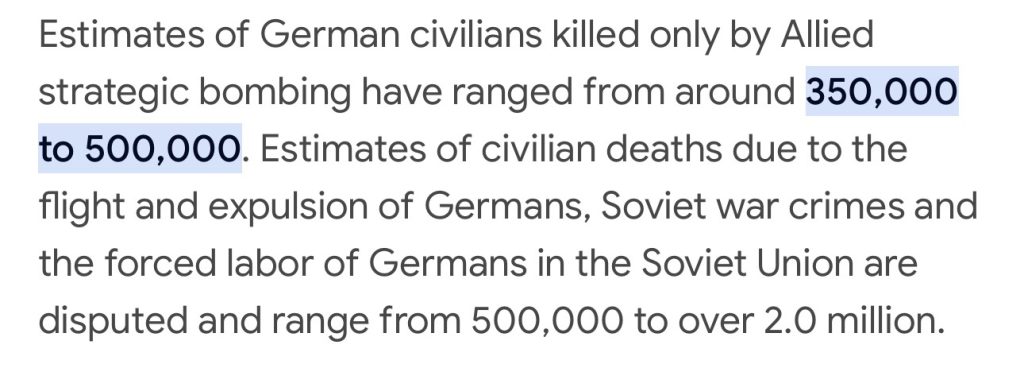
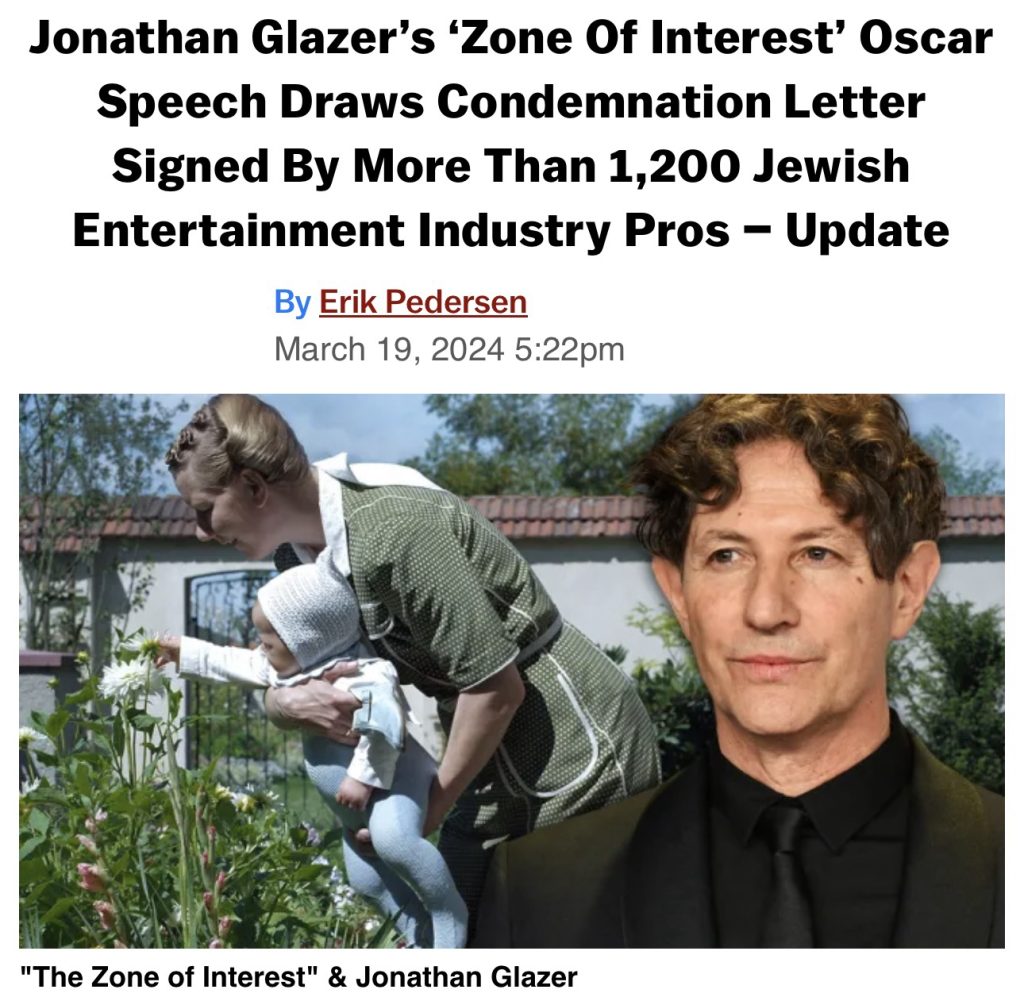

Just another Mad Max movie, which is fine but it's just another one...right?
Login with Patreon to view this post
Login with Patreon to view this post


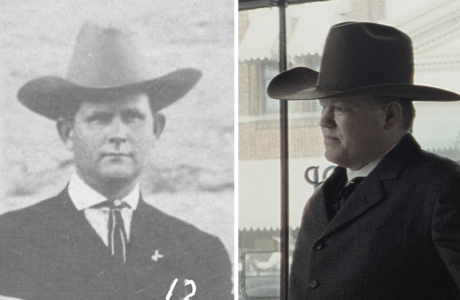 All Hail Tom White, Taciturn Hero of “Killers of the Flower Moon”
All Hail Tom White, Taciturn Hero of “Killers of the Flower Moon”Roughly two months ago a very early draft of Eric Roth‘s screenplay for Killers of the Flower Moon (dated 2.20.17,...
More »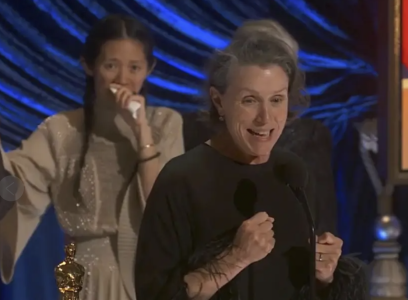 Dead-End Insanity of “Nomadland”
Dead-End Insanity of “Nomadland”Frances McDormand‘s Fern was strong but mule-stubborn and at the end of the day self-destructive, and this stunted psychology led...
More »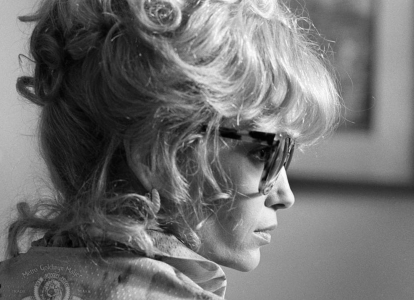 Mia Farrow’s Best Performances?
Mia Farrow’s Best Performances?Can’t decide which performance is better, although I’ve always leaned toward Tina Vitale, her cynical New Jersey moll behind the...
More »

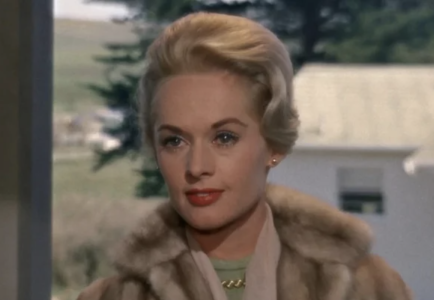 Hedren’s 94th
Hedren’s 94thTwo days ago (1.19) a Facebook tribute congratulated Tippi Hedren for having reached her 94th year (blow out the candles!)...
More » Criminal Protagonists
Criminal ProtagonistsA friend suggested a list of the Ten Best American Crime Flicks of the ‘70s. By which he meant films...
More »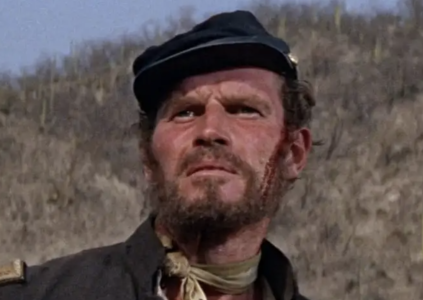 “‘Moby-Dick’ on Horseback”
“‘Moby-Dick’ on Horseback”I’ve never been able to give myself over to Sam Peckinpah’s Major Dundee, a 1965 Civil War–era western, and I’ve...
More »



